Hospitality Industry In Italy Market Size
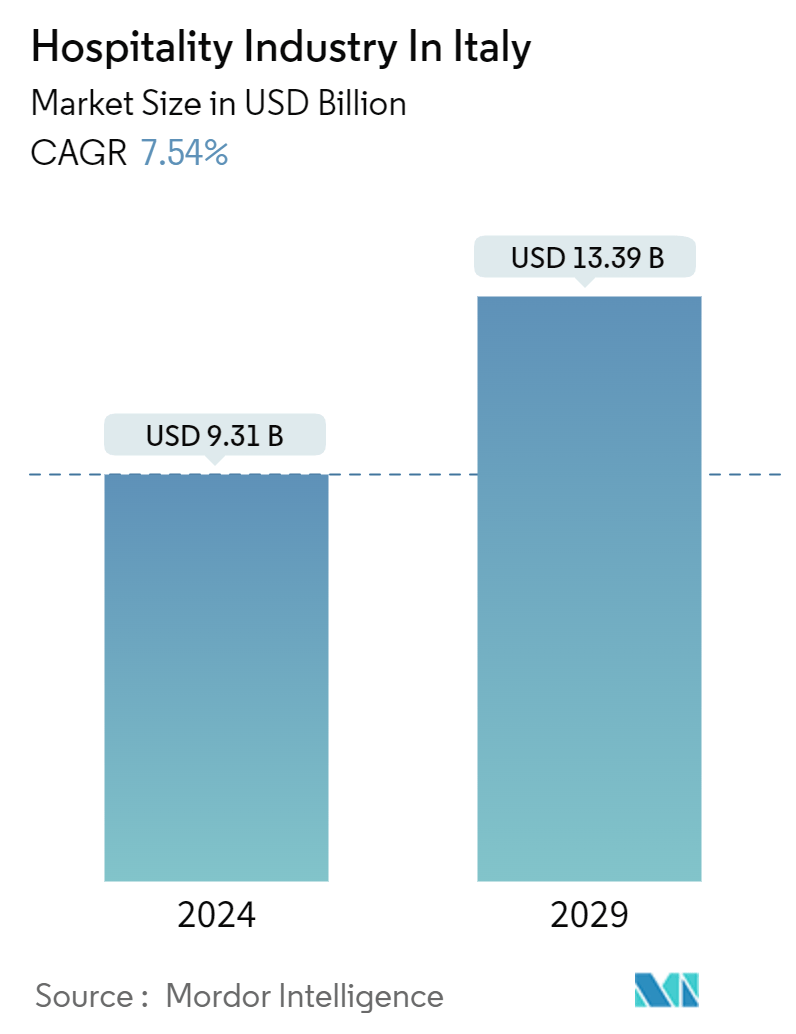
| Study Period | 2020 - 2029 |
| Base Year For Estimation | 2023 |
| Market Size (2024) | USD 9.31 Billion |
| Market Size (2029) | USD 13.39 Billion |
| CAGR (2024 - 2029) | 7.54 % |
| Market Concentration | Medium |
Major Players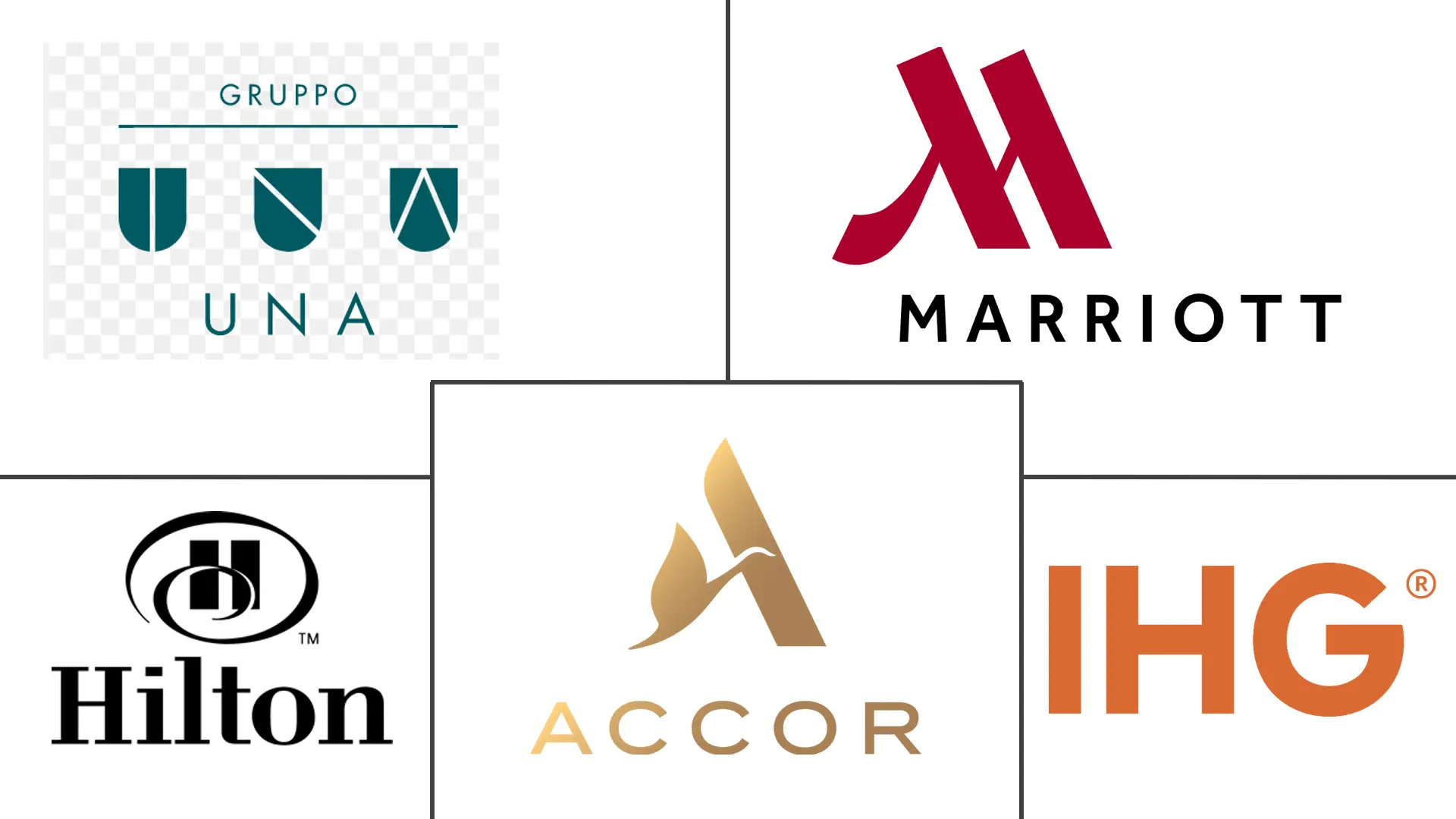
*Disclaimer: Major Players sorted in no particular order |
Hospitality Industry In Italy Market Analysis
The Hospitality Industry In Italy Market size is estimated at USD 9.31 billion in 2024, and is expected to reach USD 13.39 billion by 2029, growing at a CAGR of 7.54% during the forecast period (2024-2029).
The hospitality industry in Italy is witnessing a surge in revenue, primarily driven by a booming tourism sector . In the previous year, the tourism sector in Italy saw a notable uptick and a footfall of over 63 million tourists. Notably, demand from domestic firms and other EU nations has emerged as a pivotal force, accounting for nearly 60% of Italy's tourism sector. This heightened demand is evident in the proliferation of domestic and international hotel chains, with significant disparities in their current growth rates across the country. Milan and Rome are the top draws for international visitors, closely followed by Florence and Venice. Rome, boasting over 45 international 5-star hotels, stands out as a hub for luxury brands.
Italy's hospitality industry, boasting a staggering 1 million rooms, is the world's fourth-largest, trailing the United States, China, and Japan. The industry is witnessing a rise in overnight stays, with many international brands securing regional management contracts. The Italian hospitality industry has a vibrant tapestry encompassing many offerings. From opulent luxury hotels to charming bed and breakfasts, Italy caters to the diverse needs of both local and global travelers. A hallmark of the Italian hospitality experience is its unwavering commitment to personalized service and meticulous attention to detail. Italian hospitality professionals are renowned for their warm and familial approach, ensuring guests feel at home. Whether it's a warm welcome at the reception or a tailored recommendation for a local eatery, Italy's hospitality industry strives to create lasting memories for its visitors.
Italy's hospitality industry extends beyond accommodations, encompassing a rich culinary scene. Italy is celebrated for its gastronomic prowess, from Michelin-starred establishments to cozy trattorias. Italian chefs and restaurateurs take immense pride in sourcing fresh, local ingredients to craft authentic and delectable dishes. Beyond hotels and eateries, the Italian hospitality industry encompasses various tourism services, including tour operators, travel agencies, and event planners. These professionals work tirelessly to curate bespoke experiences, whether a wine-tasting tour in Tuscany or a dreamy destination wedding in an idyllic Italian village. The hospitality industry in Italy is instrumental in enhancing the country's allure as a tourist destination, highlighting its rich cultural heritage and natural wonders.
Hospitality Industry In Italy Market Trends
Italy's Tourism Surge is a Catalyst for Hospitality Expansion
Italy's thriving tourism sector has significantly influenced its hospitality industry. As global tourists flock to Italy, captivated by its rich history, vibrant culture, and stunning landscapes, the demand for hospitality services, ranging from accommodations to dining, increases. Central to this growth is the rising tide of international visitors. Italy, celebrated for its iconic landmarks such as the Colosseum, Vatican City, and the enchanting canals of Venice, recorded a 3.2% rise in international tourist arrivals in 2023, culminating in a historic 64 million visitors. This influx catalyzed a robust expansion in the hospitality industry, increasing the demand for hotels, resorts, and diverse accommodations.
Moreover, as tourists venture beyond the famed locales of Rome, Florence, and Venice, delving into the scenic wonders of Tuscany, Sicily, and the Amalfi Coast, the emergence of new hospitality venues, from hotels to charming bed and breakfasts, is burgeoning. This trend is witnessed across the dining and entertainment industries as well. With travelers increasingly craving authentic Italian culinary experiences, there has been a notable uptick in restaurants, cafes, and various food-centric enterprises. This culinary enthusiasm not only drives employment but also strengthens the overarching hospitality industry, evidenced by the restaurant industry’s impressive 4.5% growth rate over the past year. The tourism surge has also ushered in diversification within Italy's hospitality industry. Beyond the conventional hotels and dining establishments, there is a notable rise in alternative offerings such as vacation rentals, boutique hotels, and agritourism. The alternative accommodations segment witnessed a commendable 7% growth in the past year. This diversification aligns with shifting tourist preferences and paves the way for fresh entrepreneurial opportunities within the hospitality industry.
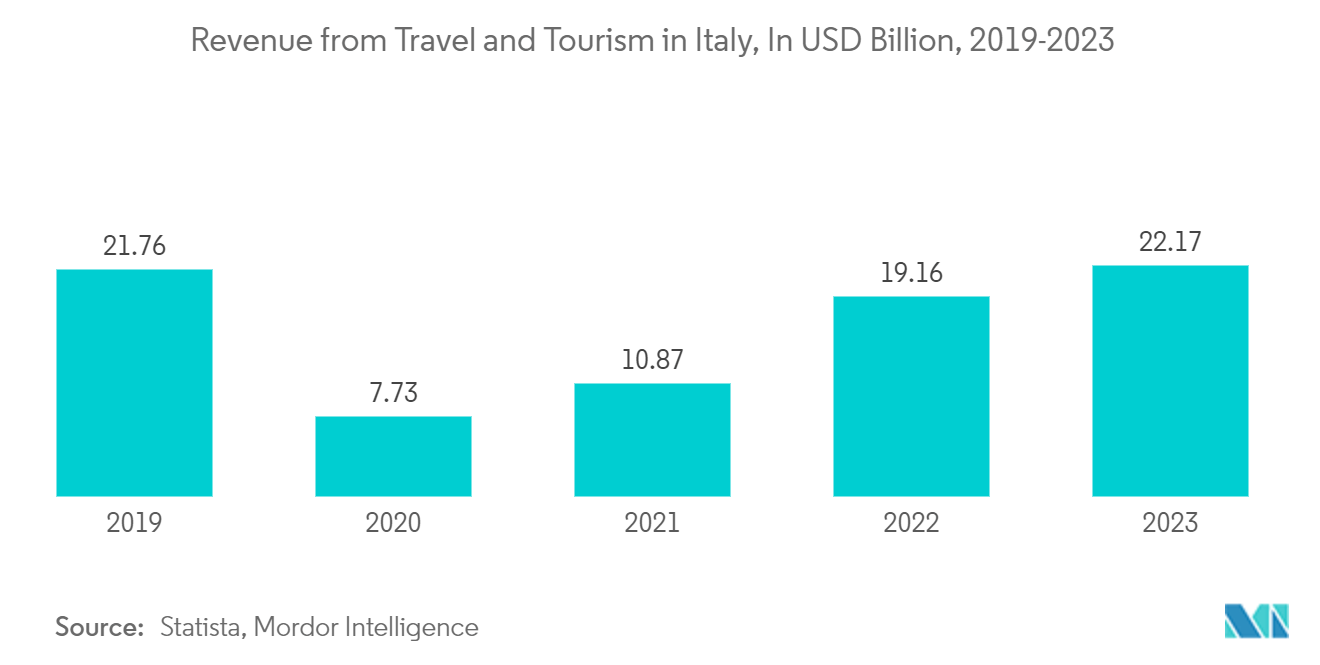
Economic Growth is Driving the Market
The hospitality industry in Italy is witnessing a notable upswing, buoyed by the country's robust economic growth. Italy's economy has been steadily rising, marked by a surge in disposable incomes and consumer spending. Consequently, there has been an uptick in domestic and international tourism, with Italy's rich cultural heritage and scenic landscapes acting as perennial attractions. Italy's recent economic growth has broadened its appeal, resulting in a notable uptick in the demand for hospitality services. This demand is evident in the rising number of hotels, resorts, and other accommodations nationwide.
Notably, major cities like Rome, Florence, and Venice have witnessed a significant uptick in hotel and luxury resort developments. Even smaller towns, previously less frequented by tourists, are witnessing a surge in hospitality infrastructure. The expansion is generating a significant number of job opportunities and has had a ripple effect on various other sectors. The heightened demand for hospitality services has boosted the construction industry, with new hotels and resorts being built. Additionally, other industries like transportation, food and beverages, and entertainment reap the benefits as tourists seek various services during their stay.
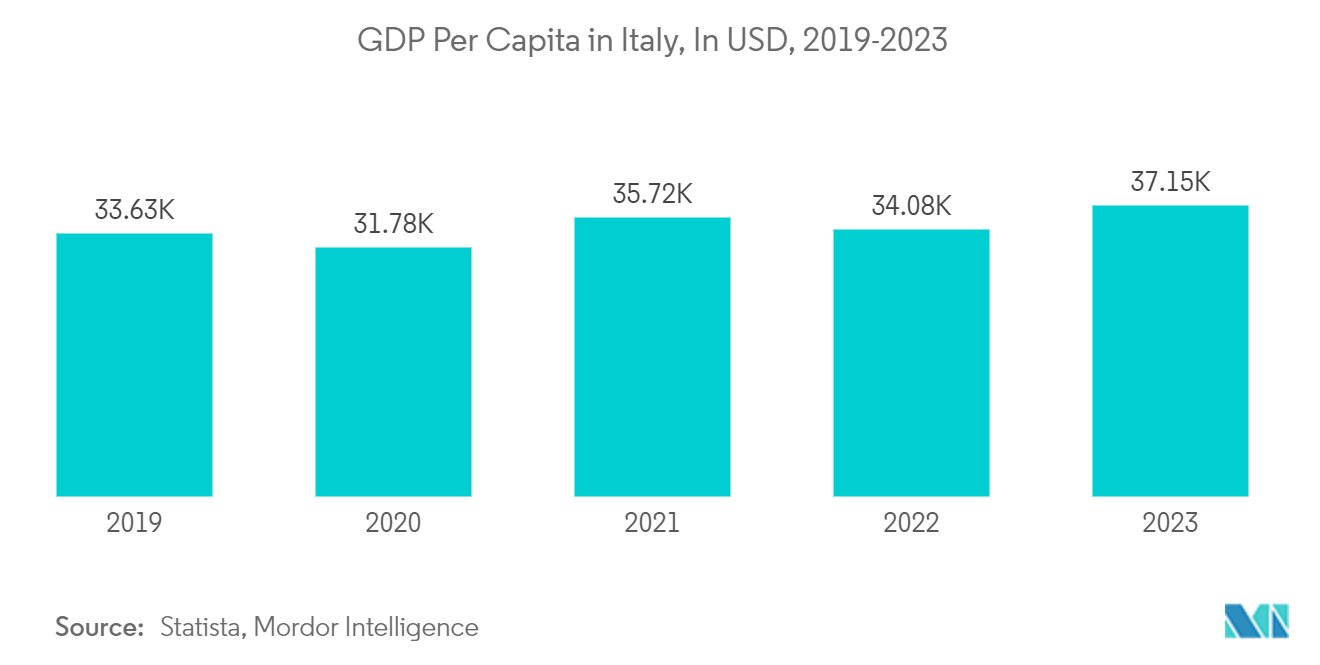
Hospitality Industry In Italy Industry Overview
Italy's hospitality industry is semi-consolidated, with dominant hotel chains and prominent hospitality firms. These entities wield significant influence, particularly in crucial tourist hubs, and cater to diverse traveler segments. From budget-conscious tourists to those seeking luxury, these players boast robust resources and infrastructure, enabling them to offer top-notch services and amenities. Some of the major players in the market include Accor SA, InterContinental Hotels Group, Marriott International Inc., Hilton Hotels and Resorts, and Gruppo UNA SpA.
Hospitality Industry In Italy Market Leaders
-
Accor SA
-
InterContinental Hotels Group
-
Marriott International, Inc
-
Hilton Hotels and Resorts
-
Gruppo UNA SpA
*Disclaimer: Major Players sorted in no particular order
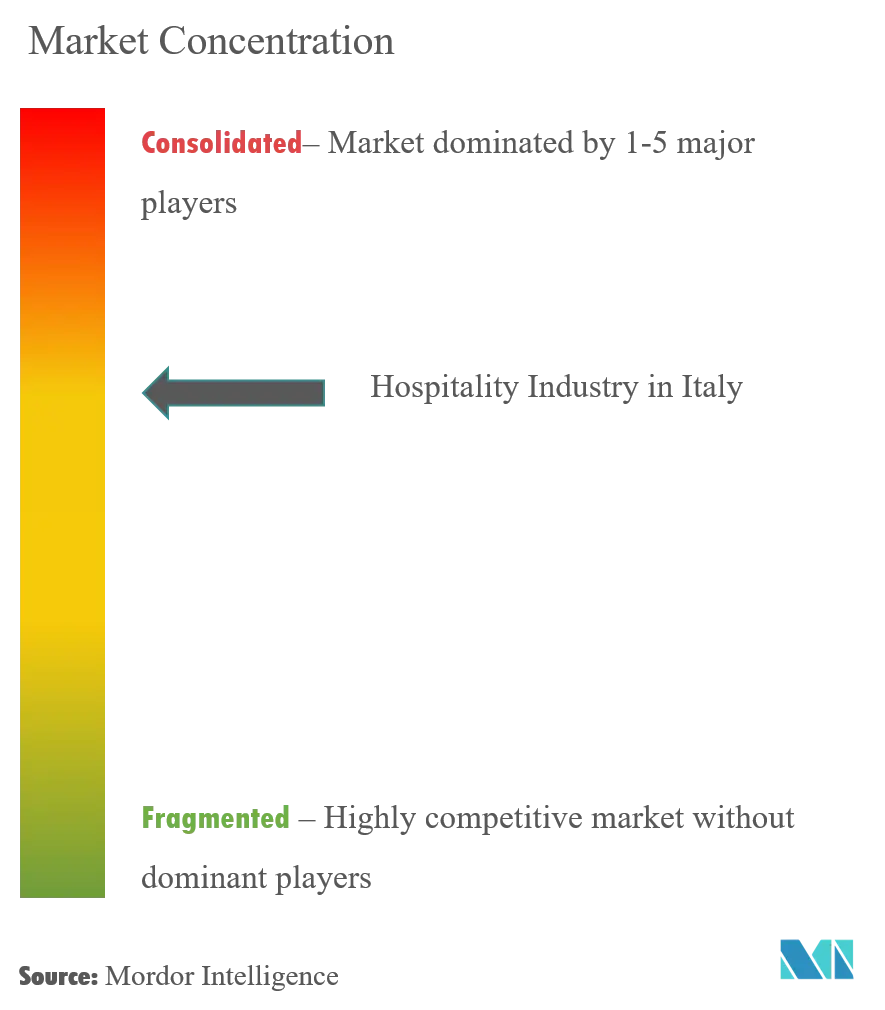
Hospitality Industry In Italy Market News
- March 2024: In a landmark deal, Hilton acquired Graduate Hotels for a hefty USD 210 million, marking its first brand acquisition in over two decades. This strategic move by Hilton aligned with the trend of consolidation in the hotel sector, which was grappling with mounting challenges.
- January 2024: Accor strategically broadened its Luxury & Lifestyle division, responding to the increased global demand for upscale and culturally resonant travel experiences. Over the next two years, Accor plans to unveil 100 additional luxury and lifestyle hotels, aiming for a minimum of 50 new project signings annually.
Hospitality Industry In Italy Market Report - Table of Contents
1. INTRODUCTION
1.1 Study Assumptions and Market Definition
1.2 Scope of the Study
2. RESEARCH METHODOLOGY
3. EXECUTIVE SUMMARY
4. MARKET INSIGHTS AND DYNAMICS
4.1 Market Overview
4.2 Market Drivers
4.2.1 Rich Cultural Heritage
4.2.2 Increasing Disposable Income Among Consumers Have Led to a Rise in Domestic Tourism
4.3 Market Restraints
4.3.1 Seasonality of Tourism
4.4 Value Chain Analysis
4.5 Porter's Five Forces Analysis
4.5.1 Threat of New Entrants
4.5.2 Bargaining Power of Buyers/Consumers
4.5.3 Bargaining Power of Suppliers
4.5.4 Threat of Substitute Products
4.5.5 Intensity of Competitive Rivalry
4.6 Insights on Revenue Flows from Accommodation and the Food and Beverage Sectors
4.7 Technological Innovations in the Hospitality Industry
4.8 Insights on Shared Living Spaces Impact on the Hospitality Industry
4.9 Insights on Other Economic Contributors to the Hospitality Industry
4.10 Impact of COVID-19 on the Hospitality Industry
5. MARKET SEGMENTATION
5.1 By Type
5.1.1 Chain Hotels
5.1.2 Service Apartments
5.1.3 Independent Hotels
5.2 By Segment
5.2.1 Budget and Economy Hotels
5.2.2 Mid and Upper mid scale Hotels
5.2.3 Luxury Hotels
6. COMPETITIVE LANDSCAPE
6.1 Market Concentration
6.2 Company Profiles
6.2.1 Best Western International Inc.
6.2.2 Accor SA
6.2.3 Marriott International Inc.
6.2.4 NH Hotel Group SA
6.2.5 Gruppo Una
6.2.6 InterContinental Hotel Group PLC
6.2.7 TH Resorts
6.2.8 Hilton Worldwide
6.2.9 ITI Hotels Group
6.2.10 Bluserena SPA
- *List Not Exhaustive
7. MARKET OPPORTUNITIES AND FUTURE TRENDS
8. DISCLAIMER AND ABOUT US
Hospitality Industry In Italy Industry Segmentation
The hospitality industry encompasses various services, including lodging, food and beverages, event management, theme parks, and travel. It also includes multiple establishments, such as hotels, tourism agencies, restaurants, and bars. A complete background analysis of the hospitality industry in Italy includes an assessment of industry associations, the overall economy, and emerging market trends by segment. Significant changes in the market dynamics and market overview are also covered in the report.
The hospitality industry in Italy is segmented by type and segment. By type, the market is segmented into chain hotels and independent hotels. By segment, the market is divided into service apartments, budget and economy hotels, mid- and upper-middle-scale hotels, and luxury hotels. The report offers market sizes and forecasts in value (USD) for all the above segments.
| By Type | |
| Chain Hotels | |
| Service Apartments | |
| Independent Hotels |
| By Segment | |
| Budget and Economy Hotels | |
| Mid and Upper mid scale Hotels | |
| Luxury Hotels |
Hospitality Industry In Italy Market Research FAQs
How big is the Hospitality Industry In Italy Market?
The Hospitality Industry In Italy Market size is expected to reach USD 9.31 billion in 2024 and grow at a CAGR of 7.54% to reach USD 13.39 billion by 2029.
What is the current Hospitality Industry In Italy Market size?
In 2024, the Hospitality Industry In Italy Market size is expected to reach USD 9.31 billion.
Who are the key players in Hospitality Industry In Italy Market?
Accor SA, InterContinental Hotels Group, Marriott International, Inc, Hilton Hotels and Resorts and Gruppo UNA SpA are the major companies operating in the Hospitality Industry In Italy Market.
What years does this Hospitality Industry In Italy Market cover, and what was the market size in 2023?
In 2023, the Hospitality Industry In Italy Market size was estimated at USD 8.61 billion. The report covers the Hospitality Industry In Italy Market historical market size for years: 2020, 2021, 2022 and 2023. The report also forecasts the Hospitality Industry In Italy Market size for years: 2024, 2025, 2026, 2027, 2028 and 2029.
Hospitality Industry In Italy Industry Report
Statistics for the 2024 Hospitality in Italy market share, size and revenue growth rate, created by Mordor Intelligence™ Industry Reports. Hospitality in Italy analysis includes a market forecast outlook to 2029 and historical overview. Get a sample of this industry analysis as a free report PDF download.



